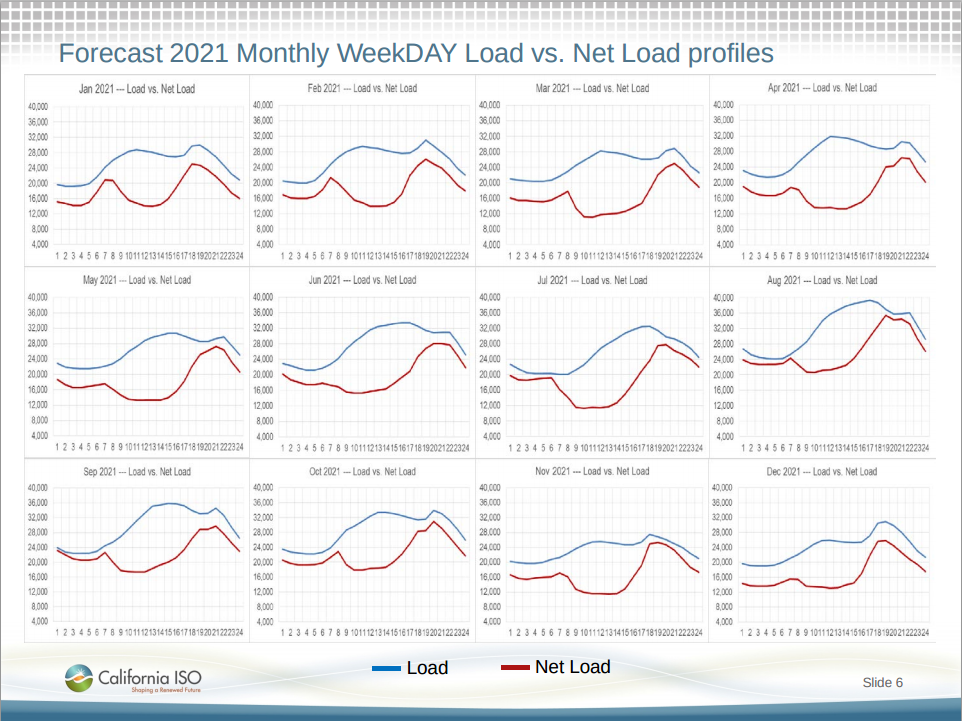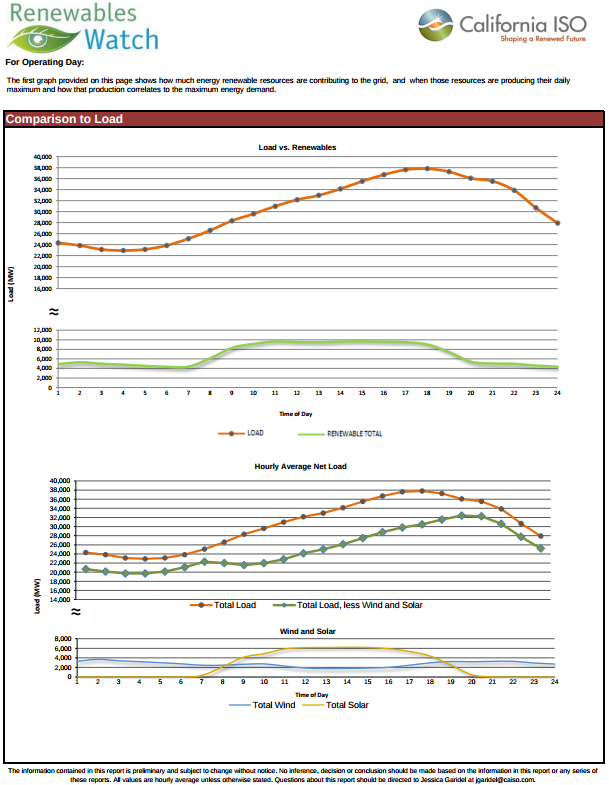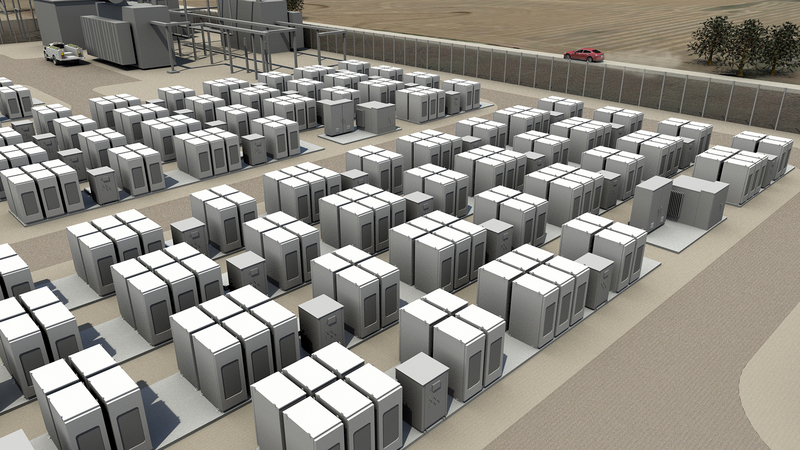The recently unveiled Clean Power Plan is way cool – it mandates replacing coal power plants with solar and wind based power systems. Supplanting the dirtiest of fossil fuels with the cleanest of renewable is a big move in the right direction. It won’t be easy, but it’s eminently doable. Along the way new jobs, new careers, new industries will be created, including a few new technologies to build on those that already exist.
Over on Forbes.com![]() a fellow, Mark P. Mills, the CEO of the Digital Power Group, claims that the Clean Power Plan is doomed because of the realities of supplying electricity to modern America. His big point is the immense difficulty to deploy enough grid energy storage systems so renewable energy can supply a significant portion of America’s electricity needs. While he has a some good points to express, I think he’s missing some other points that make the plan not as bad as what he suggests.
a fellow, Mark P. Mills, the CEO of the Digital Power Group, claims that the Clean Power Plan is doomed because of the realities of supplying electricity to modern America. His big point is the immense difficulty to deploy enough grid energy storage systems so renewable energy can supply a significant portion of America’s electricity needs. While he has a some good points to express, I think he’s missing some other points that make the plan not as bad as what he suggests.
The key points he makes are
- Electricity production and consumption has to happen simultaneously because of the difficulty of storing electricity
- Large scale battery packs, like the Tesla Energy product line, is not a solution because of the impossibility of scaling battery based energy storage to serve the grid
- Total US electricity consumption is 4,000,000 gigaWatt-hours, and therefore the entire output of the Tesla Gigafactory amounts to 5 minutes of US electricity demand
- A renewable energy plant rated for 1 megaWatt capacity often only supplies 1/3rd that in actual delivered power – that’s the “availability factor” and therefore one must build 3x the capacity to equal the turbine-based generating capacity
- Building out the long-distance transmission grid is an immense cost – so that solar/wind from the West could supply factories and such in the East
These are all good points and most of it is accurate, but he had a few inaccuracies. When discussing the need for lower battery prices, he quoted a $1,000/kWh cost for batteries in cell phones without noting that Tesla’s price for energy storage devices is far less than that. The lower battery costs fall, say if they reach $100/kWh, it’s expected that battery based energy storage will take off in a big way. A $1,000/kWh price looks impossibly daunting, but the reality is that the retail price for Tesla Energy’s Powerwall unit is $350/kWh (installation is a separate cost). Their cost for larger scale systems is probably even less, and in any case $350/kWh is a LOT less than the $1,000/kWh price quoted by Mills.
But does grid energy storage need to store a significant portion of the U.S. electricity needs? I don’t think so. To illustrate why, I want to show some charts published by California’s electricity grid operator – CaISO![]() .
.
These charts show the total electricity load on California’s grid as the blue line, and the net load (subtracting out electricity generated from solar and wind) as the red line. The horizontal axis is the time of day (hours 1 through 24) and are averaged over the whole month.
What’s happening in California is a huge success story for solar power. Installed solar power capacity is starting to be enough to erase a significant portion of daytime electricity generated by fossil fuels. In 2014 solar power was beginning to make a significant impact, and by 2021 it’s expected to make an even more significant impact.
The vast majority of solar/wind power generated during the day goes directly to an electricity consumer, with little need to store that electricity.
But it’s necessary to study the curves carefully because they show a problem. In the evening solar power drops off, with significant electricity demand remaining until late evening when everyone goes to sleep.
During daylight hours there’s a large burst of electricity from solar panels. Obviously, solar power works best when the sun is shining. In the evening most people are still active, they’re at home or other places doing stuff that requires electricity. The majority of those activities drop off by 10-11 PM, and you see in the charts that by 11pm the electricity demand drops rapidly.
Solar power could serve 100% of California’s daytime electricity – it’s just a matter of investing the money to install the solar power farms. That’s solvable problem, especially as solar power prices are falling rapidly. But what about evening and night-time electricity demand?
Mr. Mills says it’s basically impossible to have enough battery based electricity storage units to cover the 7 hours or so of evening electricity demand. He’s somewhat correct, but let’s take a closer look at the data.
Another bit of data CAISO publishes is the daily renewable energy production curves![]() . It’s a daily data dump, as well as daily PDF showing the solar and wind production per day. One thing to learn from the reports is the amount produced per day is variable – a cloudy day means solar power produces less than if it’s a sunny day, likewise if it’s a really hot day solar panels produce less electricity, etc.
. It’s a daily data dump, as well as daily PDF showing the solar and wind production per day. One thing to learn from the reports is the amount produced per day is variable – a cloudy day means solar power produces less than if it’s a sunny day, likewise if it’s a really hot day solar panels produce less electricity, etc.
This is the daily production recorded on July 27, 2015 (a weekday).
We see that California’s wind resource is active most of the day at levels between 4,000 megaWatts to 2,000 megaWatts. Interestingly, the wind resource drops off during the day and is more prevalent at night. The 4,000 mW figure is about 1/6th of the 24,000 mW net load, however.
It means that, again, it’s a matter of investment to install sufficient wind power systems. If California were to install 6x the current wind power capacity it currently has, wind power would be able to serve the majority of night-time electricity demand.
Not shown in this is the fact that California has a significant amount of hydro-electric and geothermal electricity generating resources, and could install a significant amount of ocean energy systems.
And, grid energy storage systems would play a role in this picture. Clearly there will be gaps where overlapping renewable energy resources wouldn’t be enough, and an energy storage system could time-shift electricity from one moment in time to another.
Grid-scale energy storage systems don’t have to be lithium-ion battery systems. There’s quite a lot of other energy storage system possibilities, some of which are already in use. These included pumped-hydro systems – in California we have at least one pair of hydro-electric reservoirs where, at times when electricity is cheap, water is pumped from the reservoir that’s at lower altitude to the one at a higher altitude. Another kind of bulk size grid storage is compressed air systems, where they use cheap electricity to pump air into a large tank, releasing that air at another time when electricity is more expensive.
Both are known technologies available today for energy storage.
It’s not like, as Mills suggested, the only energy storage choice is lithium-ion batteries.
At the same time, lithium-ion batteries are an up-and-coming technology whose price is falling low enough to be considered for large scale energy storage.
At last months Intersolar 2015, Tesla Motors came and presented an ambitious plan to deliver a huge quantity of lithium-ion battery grid storage capacity starting next year. The picture they showed (similar to the one above) was of a 100 megaWatt-hour system installed on 2 acres of land co-located with a electricity distribution substation. They claimed such a system could supply 4 hours of capacity (25 megaWatts per hour) and play an extremely useful role in peak-shaving.
If we go back to the CAISO charts above, they’re projecting that every evening there’ll be a peak of electricity demand. Keeping the grid running means ramping up 13,000 megaWatts of capacity within a couple hours, according to a presentation by CAISO at Intersolar 2015. The presenter went on to say it’ll be a big challenge to do so.
As I’ve said several times now in this posting, it’s “just” a matter of investment in grid energy storage systems. That evening electricity demand peak can be met with known technology.
I don’t want to downplay the complexity of the task. I’ve described it as “just a matter of investment” but obviously implementation is a lot more complex than just throwing dollars at the problem. The cost for the systems has to drop to where it’s directly competitive against fossil fuel systems, for example. And the electricity system is likely to require some redesign and planning to accomplish a grand dance of shuttling electricity between energy production, energy storage, and energy consumers.
Mr Mills closes by saying “A future grid that is both more expensive and less reliable will be terrible for the economy and toxic for politicians.” That’s opposite the Obama Administration claim that the Clean Power Plan would lower electricity costs, and make the grid more reliable. The evidence I’ve just shown, I believe, demonstrates the Administration’s claim is closer to reality than is Mr. Mills claim.
The evidence Mills gave is highly slanted to portray the combination of renewable+storage in the worst light possible. Yes, as he says, the cost of power outages is far higher than the cost of electricity. That makes grid energy storage systems a highly valuable investment with which it’ll be possible to earn lots of revenue averting power outages. That many dollars on the table is a big incentive to develop businesses and technology to do so.
- Is there enough Grid Capacity for Hydrogen Fuel Cell or Battery Electric cars? - April 23, 2023
- Is Tesla finagling to grab federal NEVI dollars for Supercharger network? - November 15, 2022
- Tesla announces the North American Charging Standard charging connector - November 11, 2022
- Lightning Motorcycles adopts Silicon battery, 5 minute charge time gives 135 miles range - November 9, 2022
- Tesla Autopilot under US Dept of Transportation scrutiny - June 13, 2022
- Spectacular CNG bus fire misrepresented as EV bus fire - April 21, 2022
- Moldova, Ukraine, Georgia, Russia, and the European Energy Crisis - December 21, 2021
- Li-Bridge leading the USA across lithium battery chasm - October 29, 2021
- USA increasing domestic lithium battery research and manufacturing - October 28, 2021
- Electrify America building USA/Canada-wide EV charging network - October 27, 2021



















